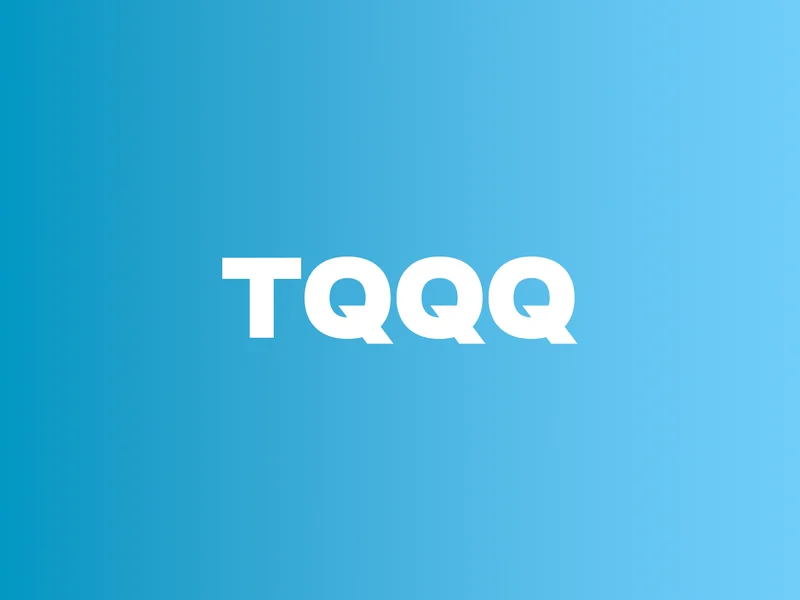Generated Title: TQQQ: Thrilling Addition or Portfolio Suicide? A Data Analyst's Take.
Alright, let's talk TQQQ. The ProShares UltraPro QQQ. Triple-leveraged exposure to the Nasdaq-100. Sounds exciting, right? Potentially portfolio-altering gains. Or, equally likely, a swift and painful lesson in risk management. So, is it a thrilling addition or portfolio suicide? The answer, as always, is in the data – and how you interpret it.
The Allure of Amplified Returns
The pitch is simple: TQQQ aims to deliver three times the daily performance of the Nasdaq-100. If the Nasdaq jumps 1%, TQQQ should, theoretically, jump 3%. That's the lure. The articles highlight this potential for outsized gains, pointing to historical performance. One article notes TQQQ's impressive returns since inception, suggesting a $10,000 investment in 2010 would have ballooned to over $2 million by late 2025. (That's a juicy headline, isn't it?)
But here's where the data gets a bit more nuanced. While TQQQ can amplify returns, it doesn't triple them over the long term. The same article admits the Nasdaq-100 generated a 21% annualized return over the past five years, while TQQQ produced a 35% annualized return. Amplified, yes. Tripled, no. This discrepancy – and it is a significant one – stems from the daily reset mechanism inherent in leveraged ETFs. They reset daily, not annually.
Think of it like this: imagine a rubber ball bouncing. Each bounce is intended to be three times the height, but after each bounce, some energy gets lost. The ball doesn't return to 3x the height each time. It gets lower and lower. That is how TQQQ works.
This daily reset is crucial to understand. It means TQQQ is designed for short-term trading, not long-term holding. The fund itself carries warnings about this, explicitly stating it's "created to meet the needs of day-trading speculators." So, the $2 million hypothetical? That assumes you perfectly timed your entry and exit points, which is, frankly, unrealistic for most investors.

Risk, Volatility, and the AI Hype
The other side of the coin is, of course, risk. TQQQ is volatile. One article highlights this, noting TQQQ's beta of 3.5 – significantly higher than the S&P 500. Beta measures price volatility relative to the S&P 500; figures are based on calendar-day windows. A higher beta means greater risk and potential reward. Another article points out TQQQ's maximum drawdown of -81.8% over five years. (That's not a typo. Eighty-one point eight percent. Ouch.) Headline News Summaries, World News, and Breaking News
The recent AI boom is fueling much of the optimism surrounding TQQQ. The Nasdaq-100 is heavily weighted towards technology stocks, and the AI narrative has pushed many of those stocks – Nvidia, Apple, Microsoft – to record highs. This has, in turn, boosted TQQQ's performance. But what happens when the AI hype cools down? Or, more likely, when the market corrects?
I've looked at hundreds of these filings, and this dependence on a single sector is always a red flag. It's like betting your entire fortune on a single roll of the dice. Sure, you could win big, but the odds are stacked against you. Long Run Wealth Advisors LLC invested $530,000 in TQQQ. Are they seeing something I'm missing? Maybe. Or maybe they are just chasing short-term gains.
So, Is It Worth the Gamble?
TQQQ isn't inherently "bad." It's a tool. Like any tool, it can be used effectively or misused disastrously. If you're a seasoned trader with a high-risk tolerance and a deep understanding of leveraged ETFs, TQQQ might be a thrilling addition to a small portion of your portfolio. If you're a novice investor looking for a quick and easy way to get rich, TQQQ is almost certainly portfolio suicide.
The key is to understand the data, acknowledge the risks, and manage your expectations. Don't be swayed by headlines promising overnight riches. Invest with your head, not your heart. And for God's sake, do your homework.
A Fool's Errand?
TQQQ: A high-wire act with a safety net made of hope.









